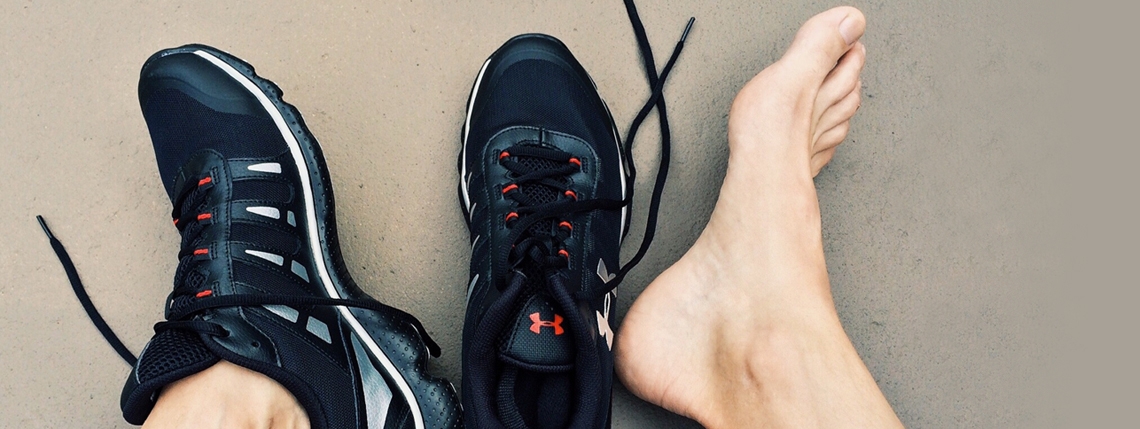If you began running when lockdown started, why not keep it up? Here’s a beginner’s guide to mastering technique and making progress.
A recent study from Run Repeat found that those who exercised once or twice a week pre-COVID-19 had increased their activity levels by 88%, and those who normally run once or twice a week increased their participation by 117% on average (researchers spoke to almost 12,000 people from 139 different countries from 24-30 March).
There are two secrets to successful running: consistency and taking small steps. Runners often make the mistake of running too slowly and too much, or too little and too fast. For most, to build the aerobic base slowly, conversation running pace is the best way to start. Add on 10% volume per week and ease back after three weeks of building. Once you’ve gained some aerobic fitness, you can add in speed work with interval training. Don’t try to break a record or run a race every time you run – this leads to injury and is meaningless. Most runners will do one or two interval sessions a week and two or three easy runs, including one long, slow run. Spread these out over the week, breaking up long runs and intense sessions with easy runs.
Mastering technique
Elite athletes are arguably born to run: they come with readymade, efficient biomechanics, ran from an early age, and fine-tune technique on the track, repeating drills and building strength. For the rest of us, learning how to run well is time well spent and can help you avoid injury.
Tune in
To improve your technique, focus your mind on your body and check in on how you’re doing. Think about posture – are you standing tall and relaxed with your shoulders back and down? Look up, draw in your core muscles and think of your hips like headlights, balanced and facing forwards, with a slight lean forward.
For the legs, consider stride length and stride frequency (cadence) – and, further down the chain, focus on how your feet land. If you increase your stride frequency (cadence) and/or stride length and you run faster, and if your feet land without hitting too hard on your heel or putting too much pressure on your toes, you’ll be more efficient. However, there is no one rule for any of this.
Cadence is the number of steps you take per minute and the easiest way to work it out is to count the number of times your feet hit the ground in 60 seconds. Author Jack Daniels found that advanced marathoners had a cadence of 180 steps per minute. For most of us, it’s less than this, and recent research has found we don’t need to aim for a particular number but rather look at our cadence as a personal measure and experiment to find what cadence gives us the best results.
Doing hill reps helps to improve stride length and frequency. As you run up the hill, you’ll improve stride length; as you run down, you’ll improve frequency. Hill training also helps increase ankle flexion, enabling you to ‘pop’ off the ground more quickly, so you can spend more time in the air.
Get strong first
As well as hill training, do prehab work to get your running muscles strong. Exercises for runners include plyometric drills on grass (hopping, striding, jumping, etc.), which should always be done after a warm-up. You can also do circuit-style workouts using compound exercises (i.e., using more than one muscle group). And opt for dynamic movements that incorporate the core and legs, such as step-ups and step-offs to strengthen leg muscles, glutes and core. Or try dynamic squats and lunges for the quads, hamstrings, glutes and calves. Aim to work the muscles in a multi-directional way with the core, for example, lunges holding dumbbells and arms overhead.
Progress your running
Running is often associated with racing but, at the time of writing, we’re making the best of online virtual races and time trials. Check out online communities such as STRAVA and Insta runners for support and virtual challenges.
About the Author

Fiona Bugler is a fitness specialist with a background in journalism, PR and marketing. She is also a PT, group X instructor, and a running coach.
In 2012, Fiona co-founded the Fitness Writers’ Association and began working with fitness brands as a content marketing and social media consultant. Now she works with individuals and brands, and offers a one-to-one coaching service for those who want to get their story and brand known. She’s the creator of the online community endurancewomen.com which celebrates ordinary women being extraordinary, and shares stories, blogs, and training tips.







